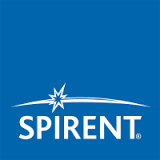December 22, 2024
December 22, 2024
Copyright 2023, IT Voice Media Pvt. Ltd.
All Rights Reserved

 Spirent Communications and NI announced their collaboration to develop test systems for 5G New Radio (NR) devices. The collaboration will allow 5G chipset and device manufacturers to validate the performance of 5G NR smartphones and IoT devices in the lab without requiring access to expensive and complex 5G base stations (gNodeBs).
Spirent Communications and NI announced their collaboration to develop test systems for 5G New Radio (NR) devices. The collaboration will allow 5G chipset and device manufacturers to validate the performance of 5G NR smartphones and IoT devices in the lab without requiring access to expensive and complex 5G base stations (gNodeBs).